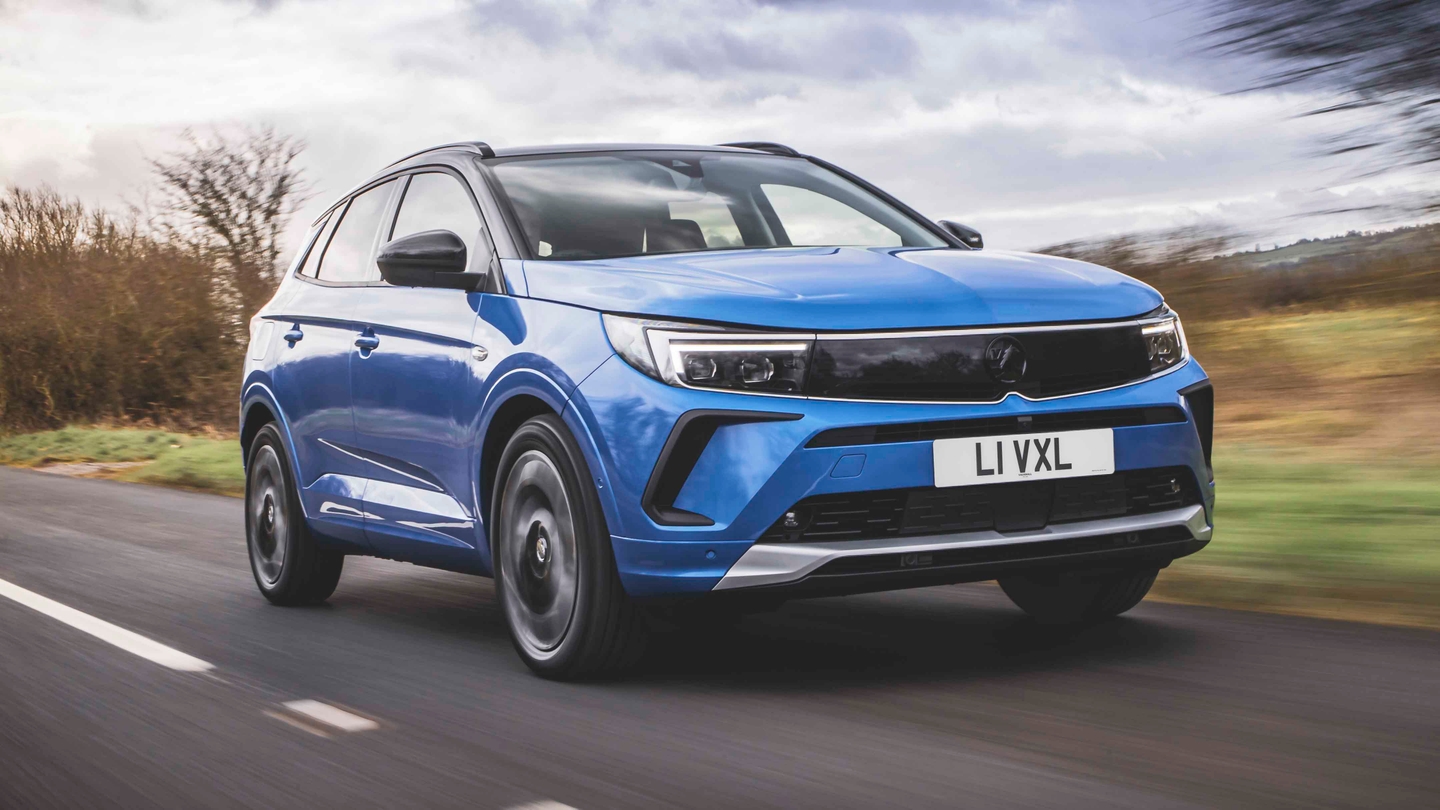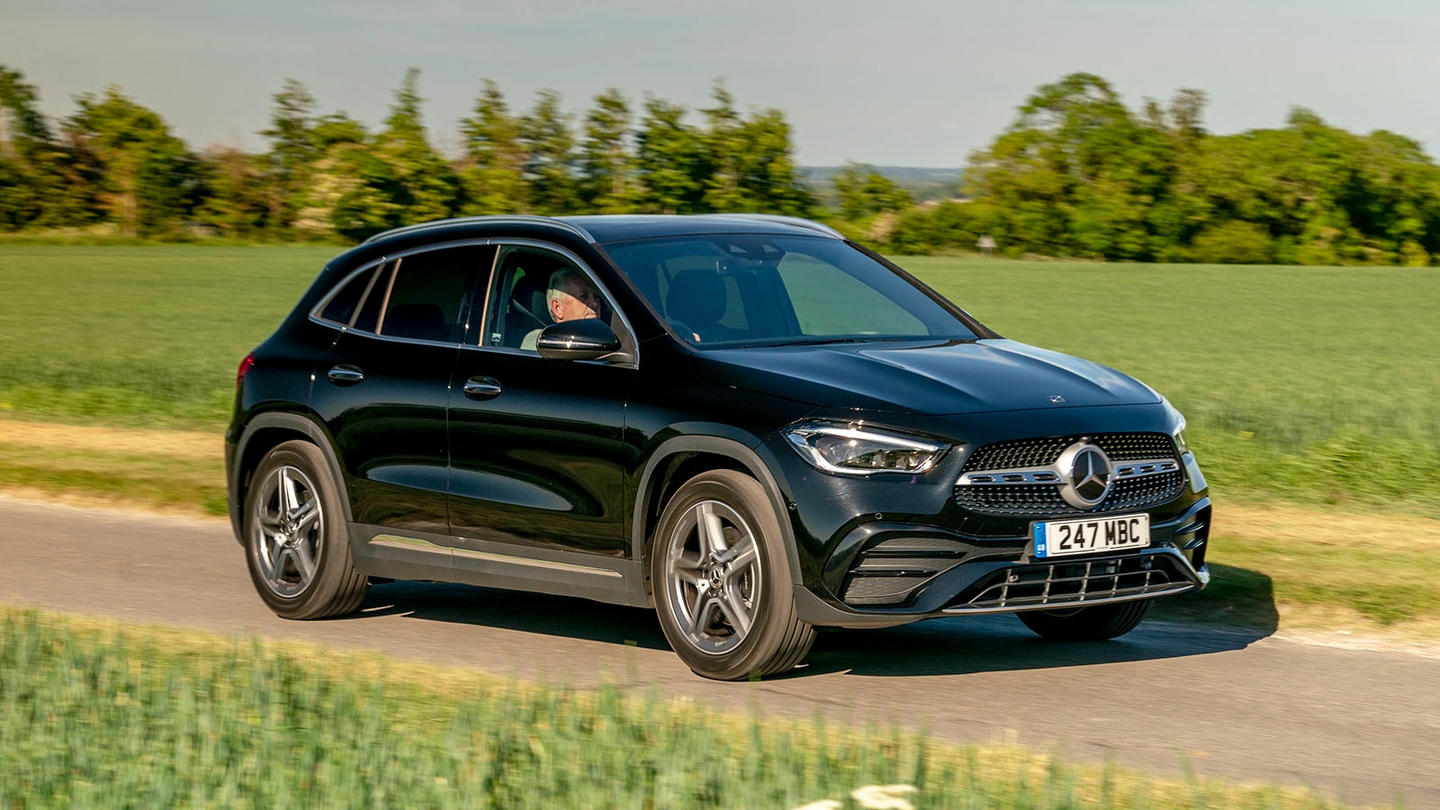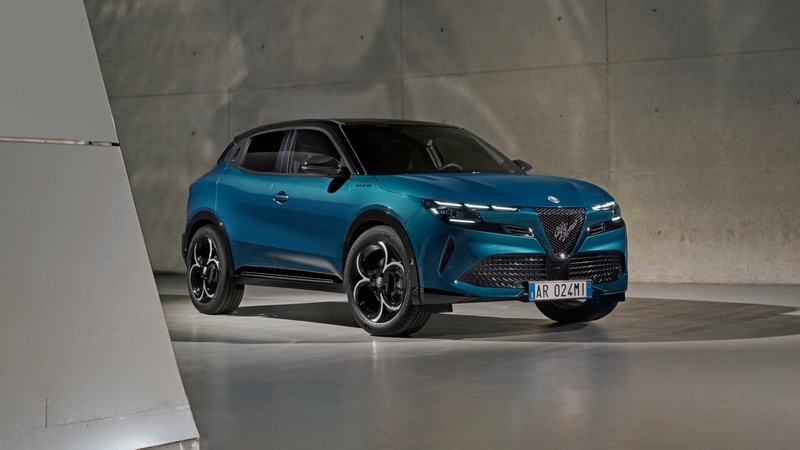
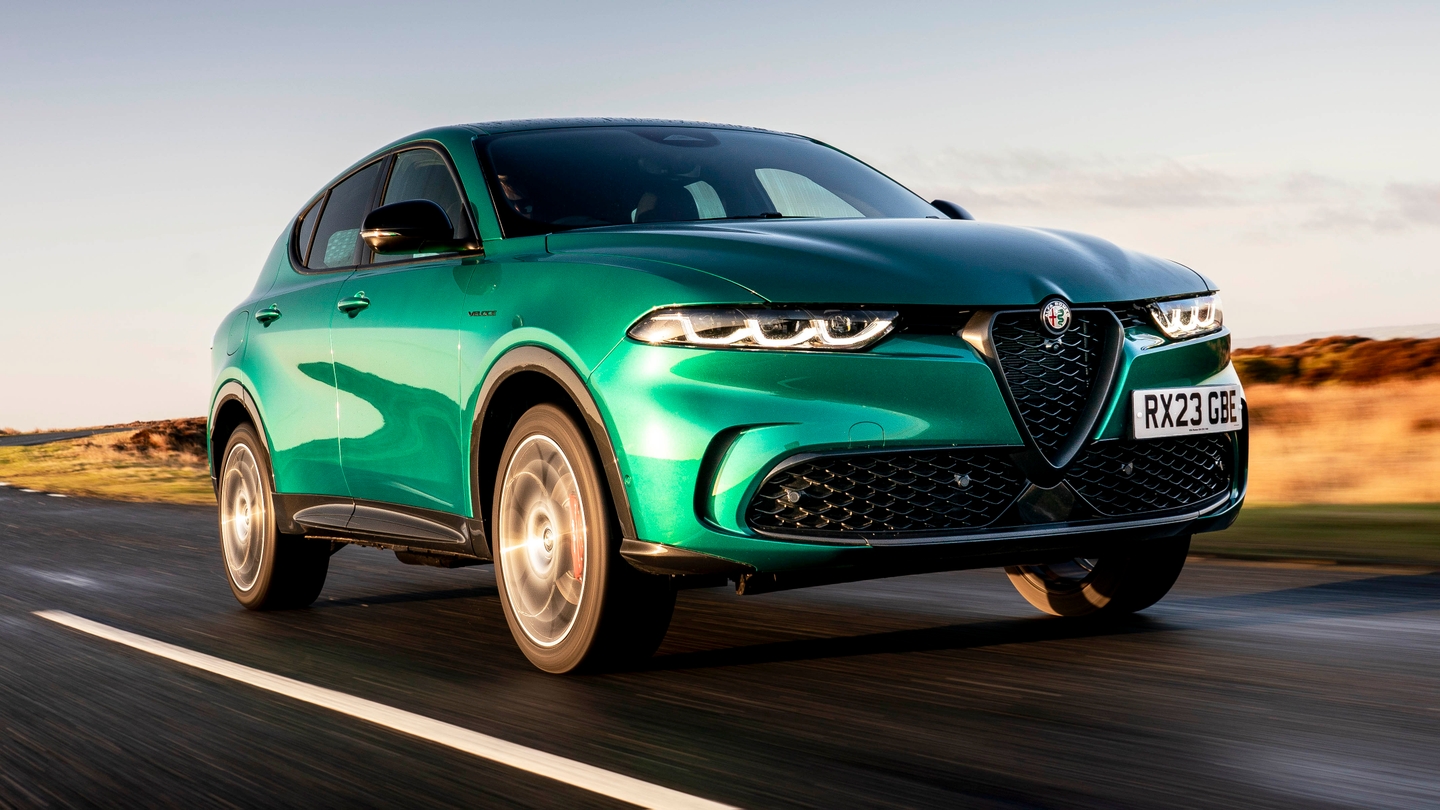
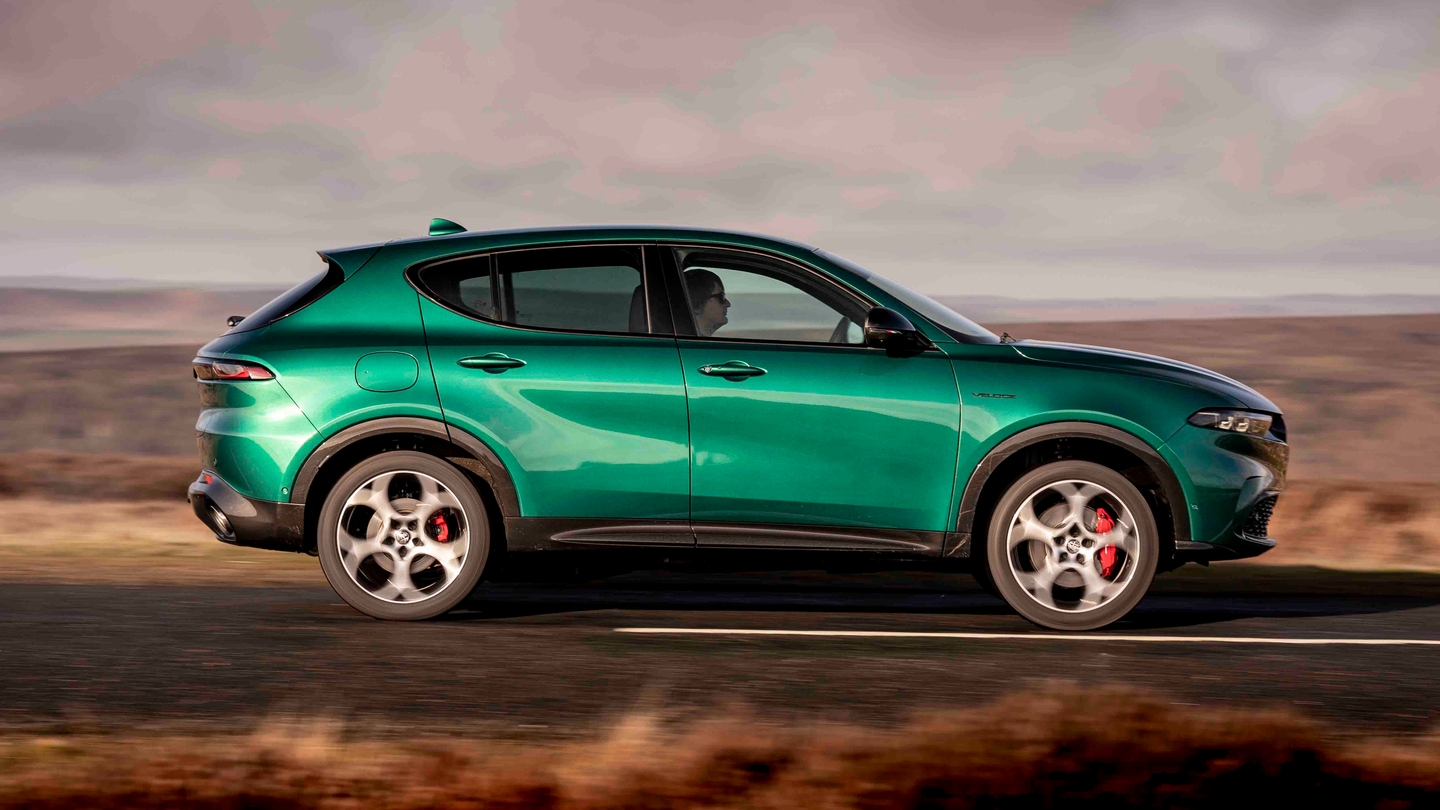
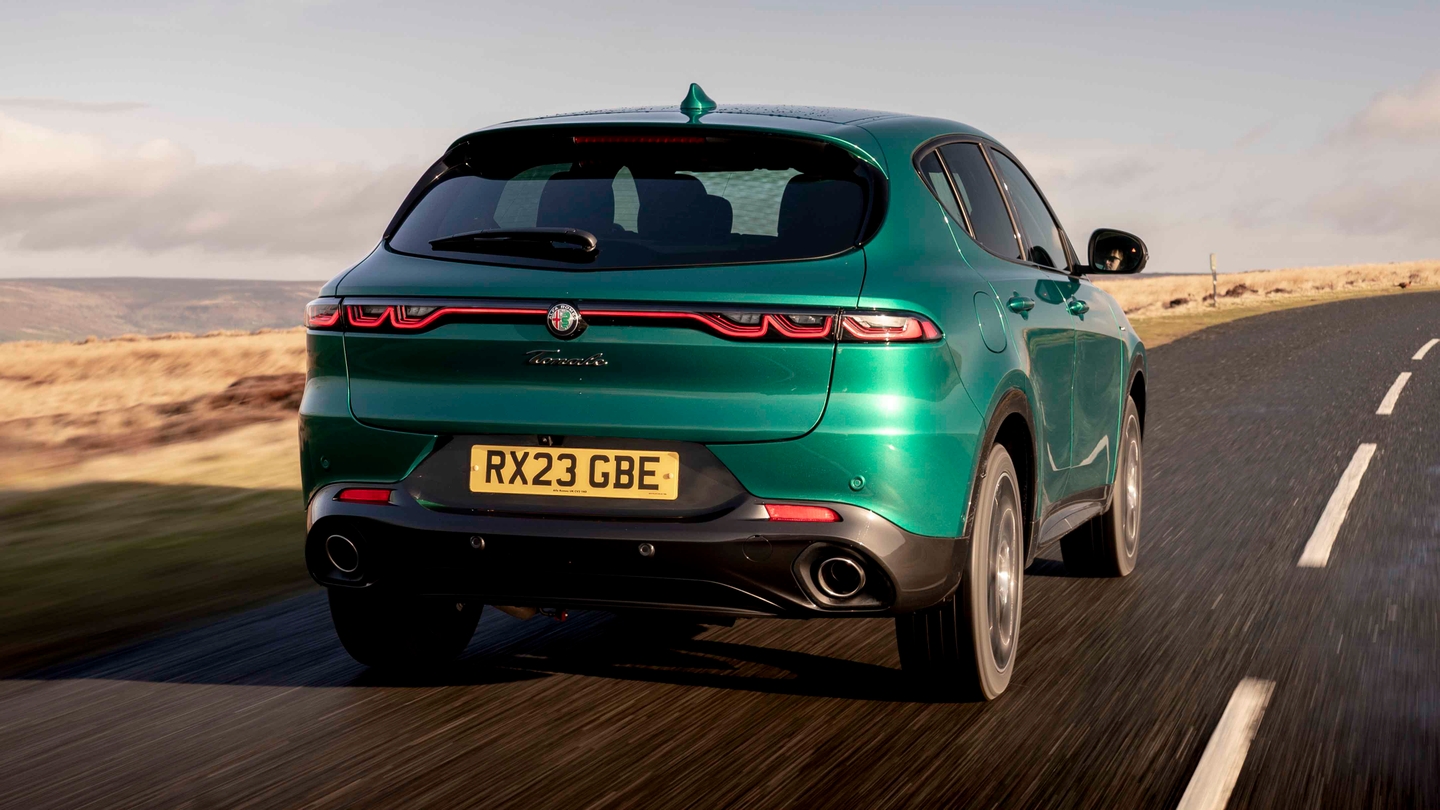
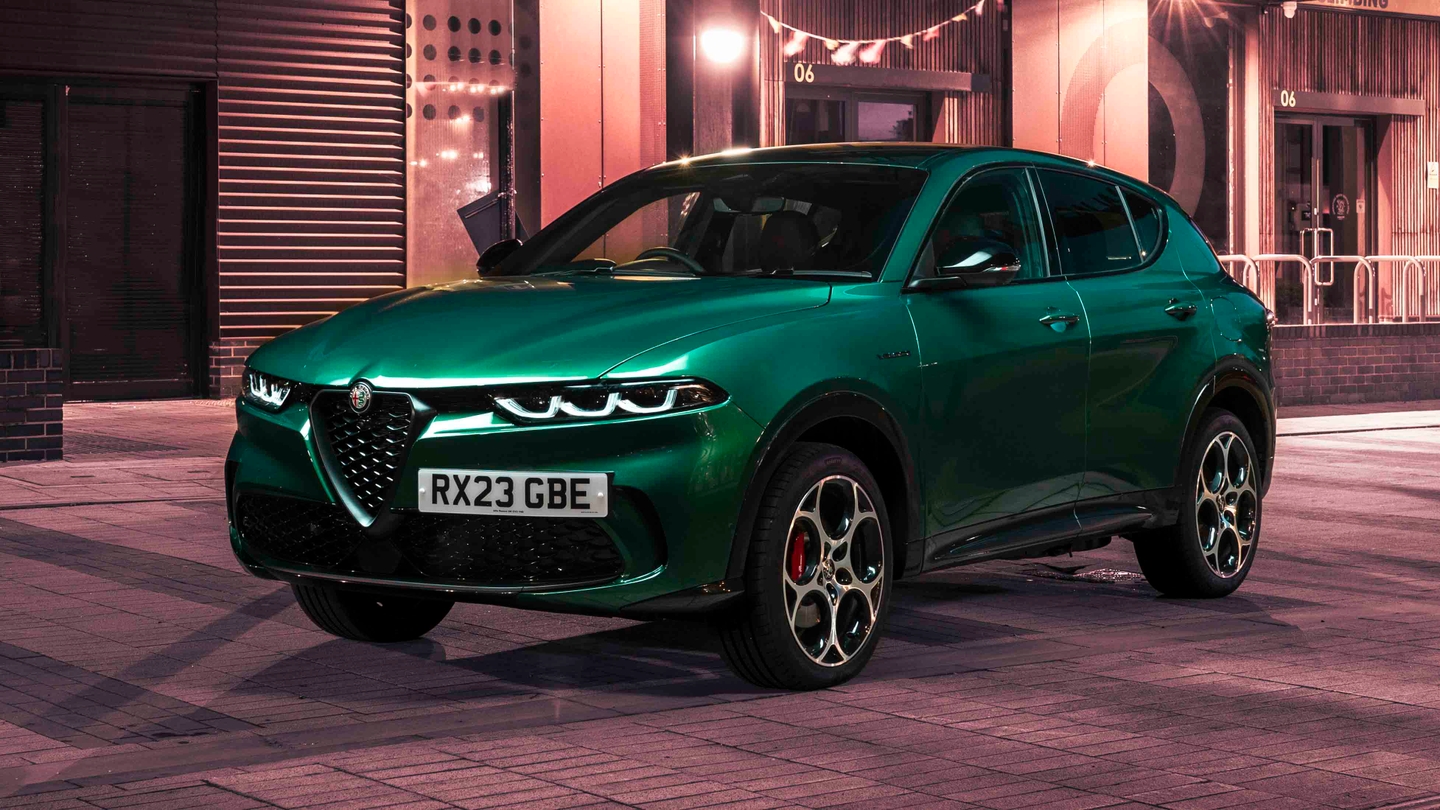
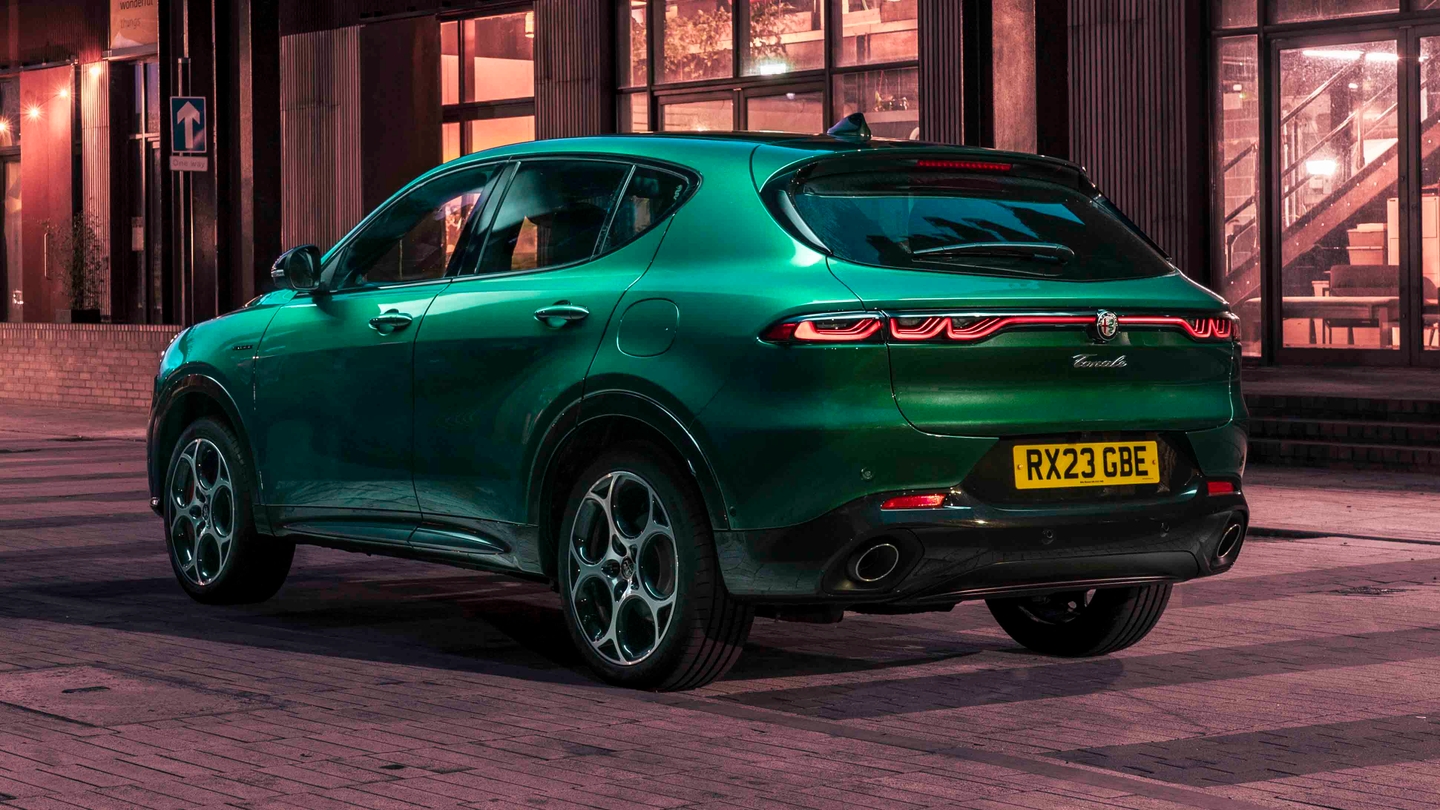

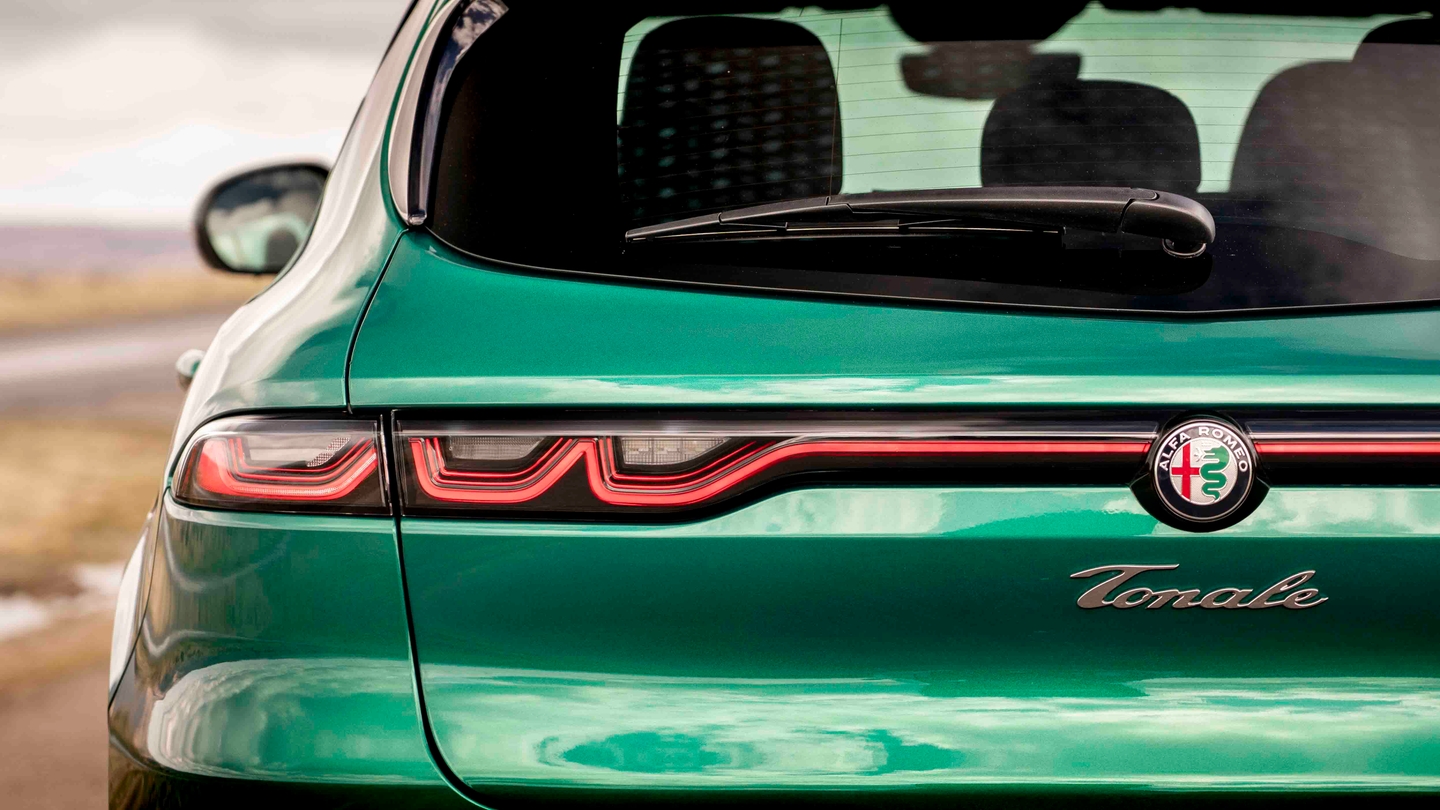
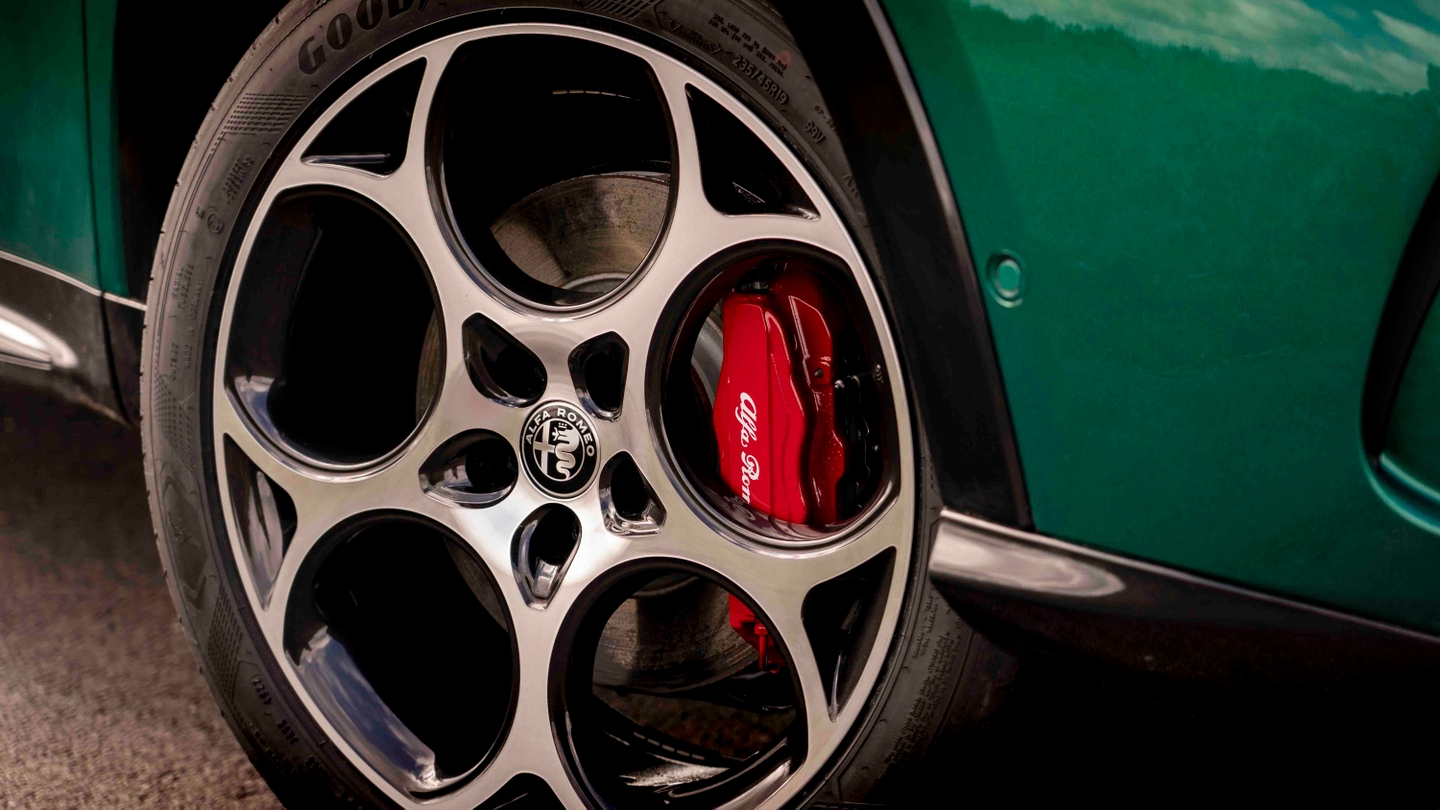
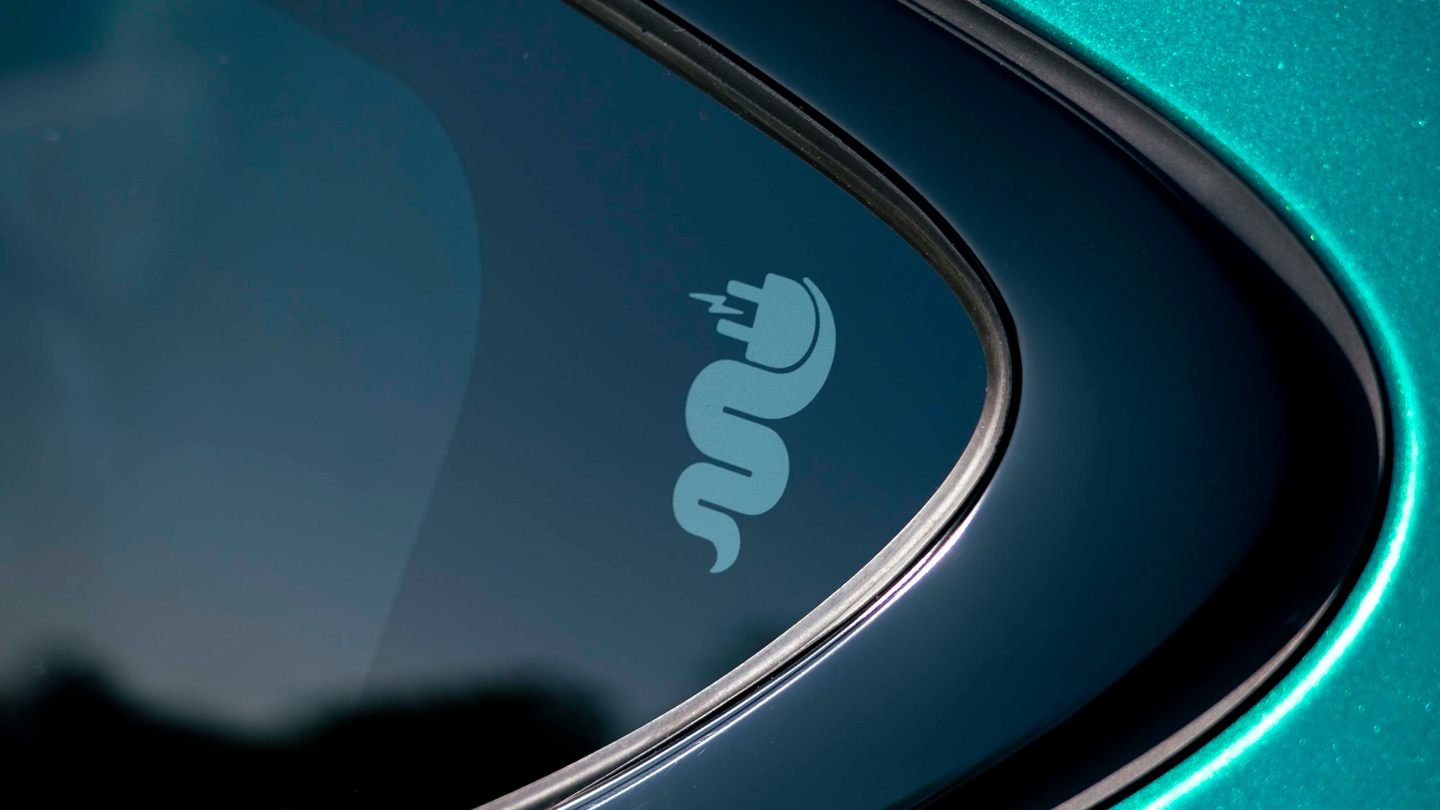
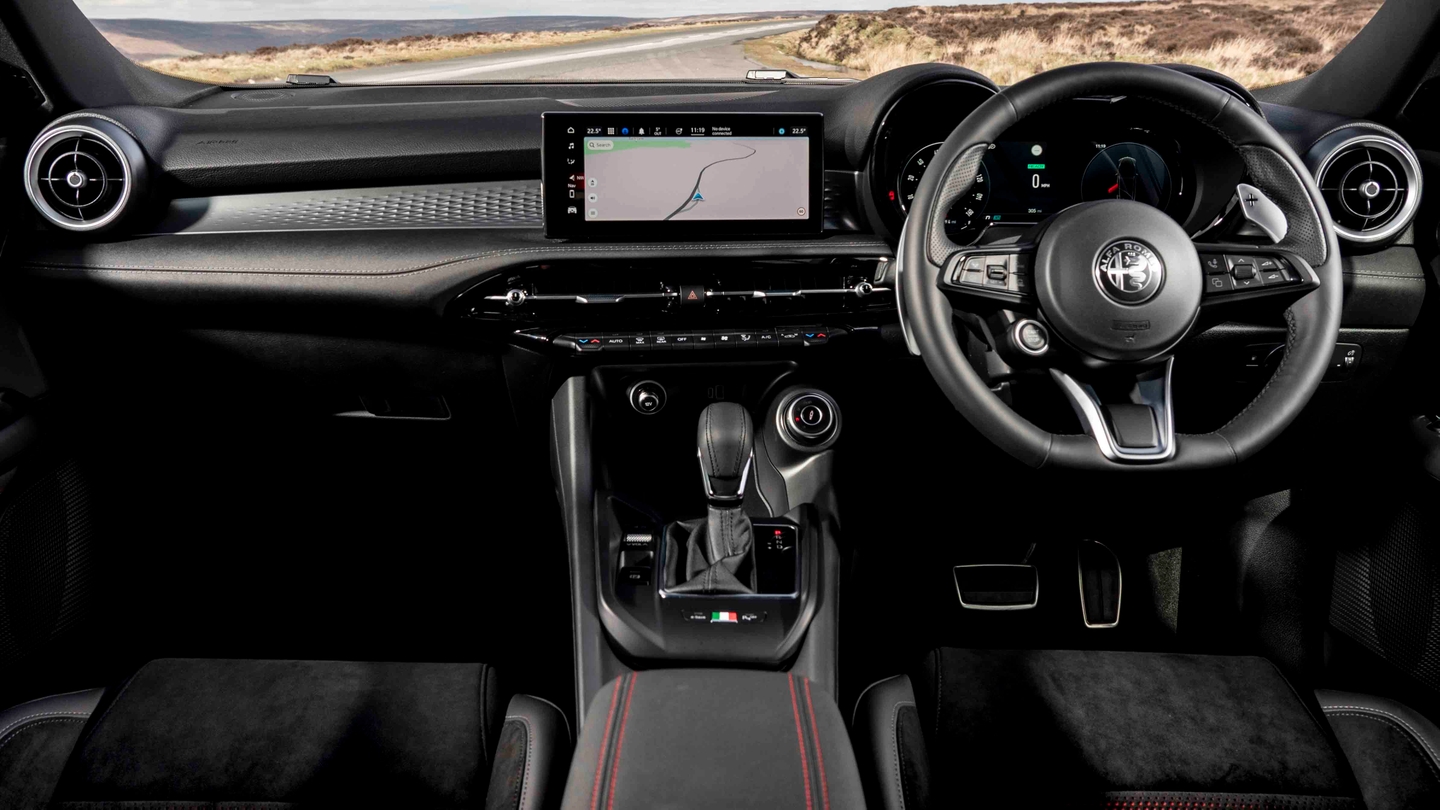

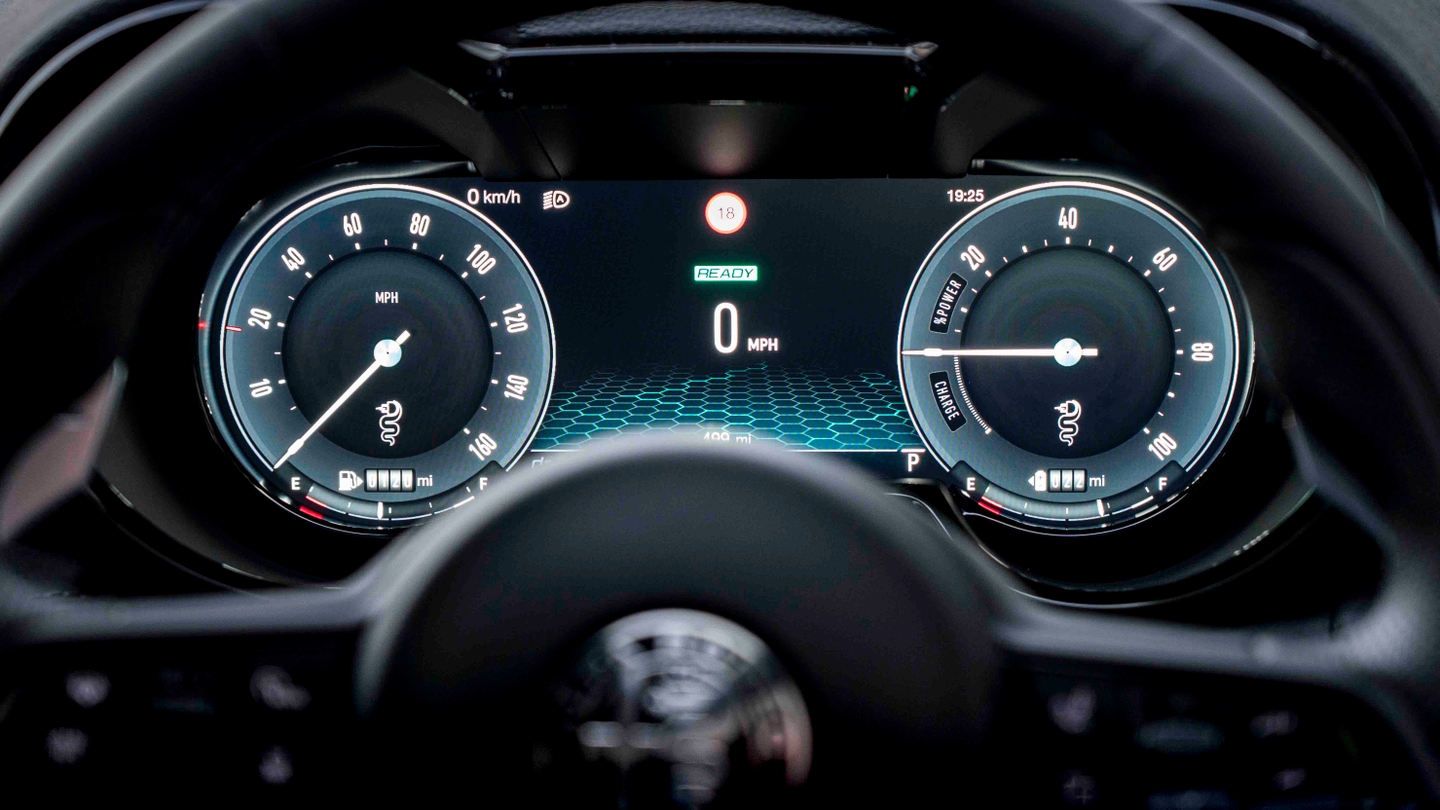
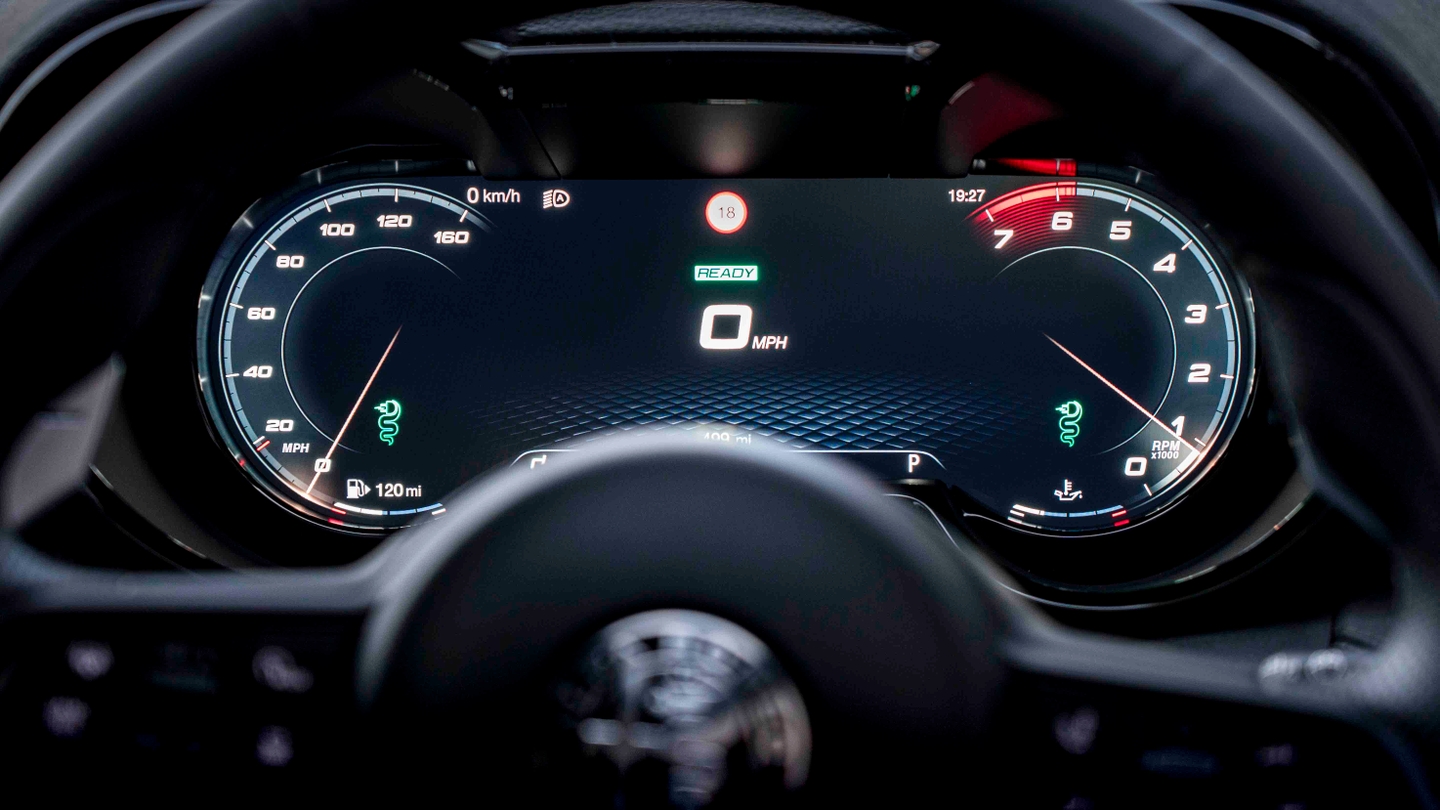
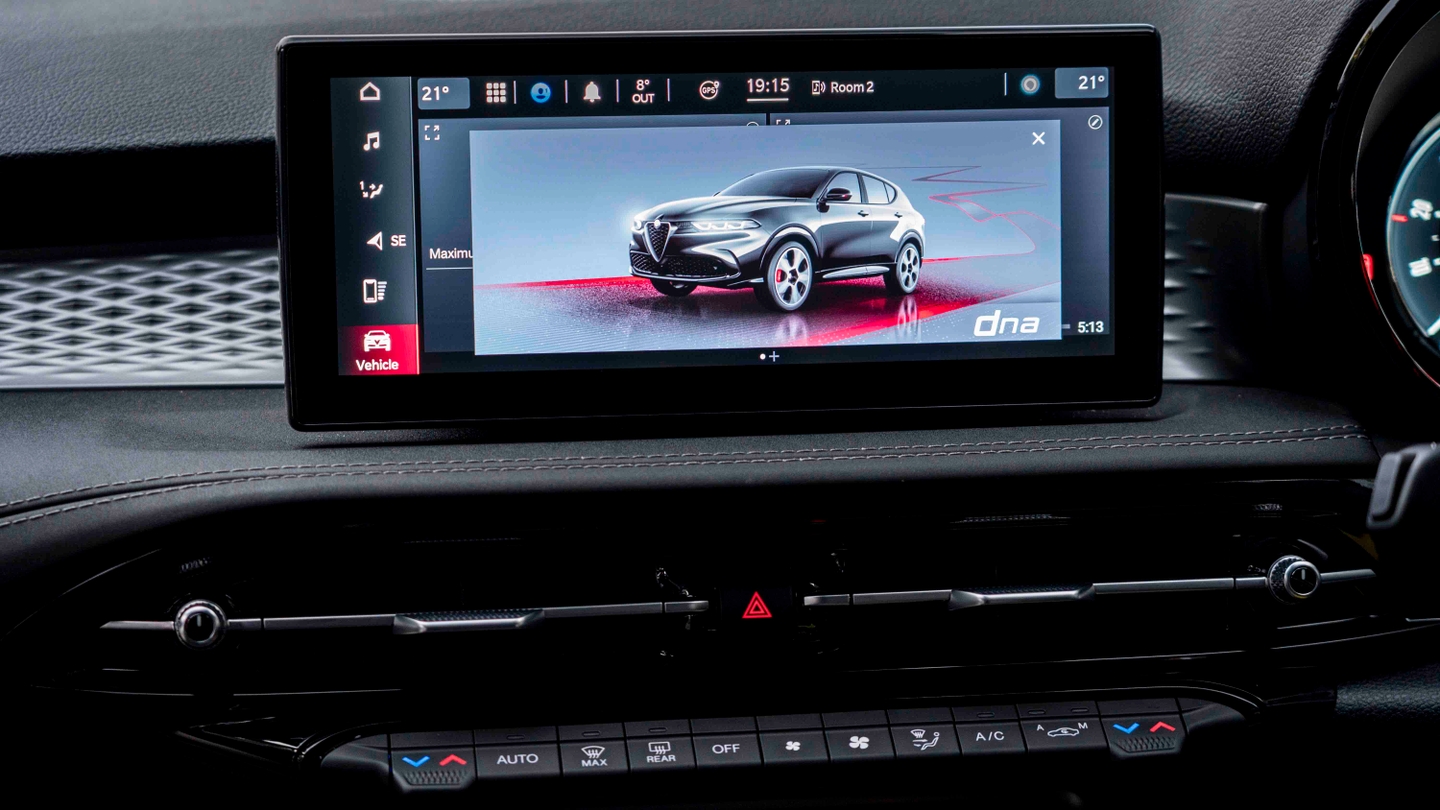
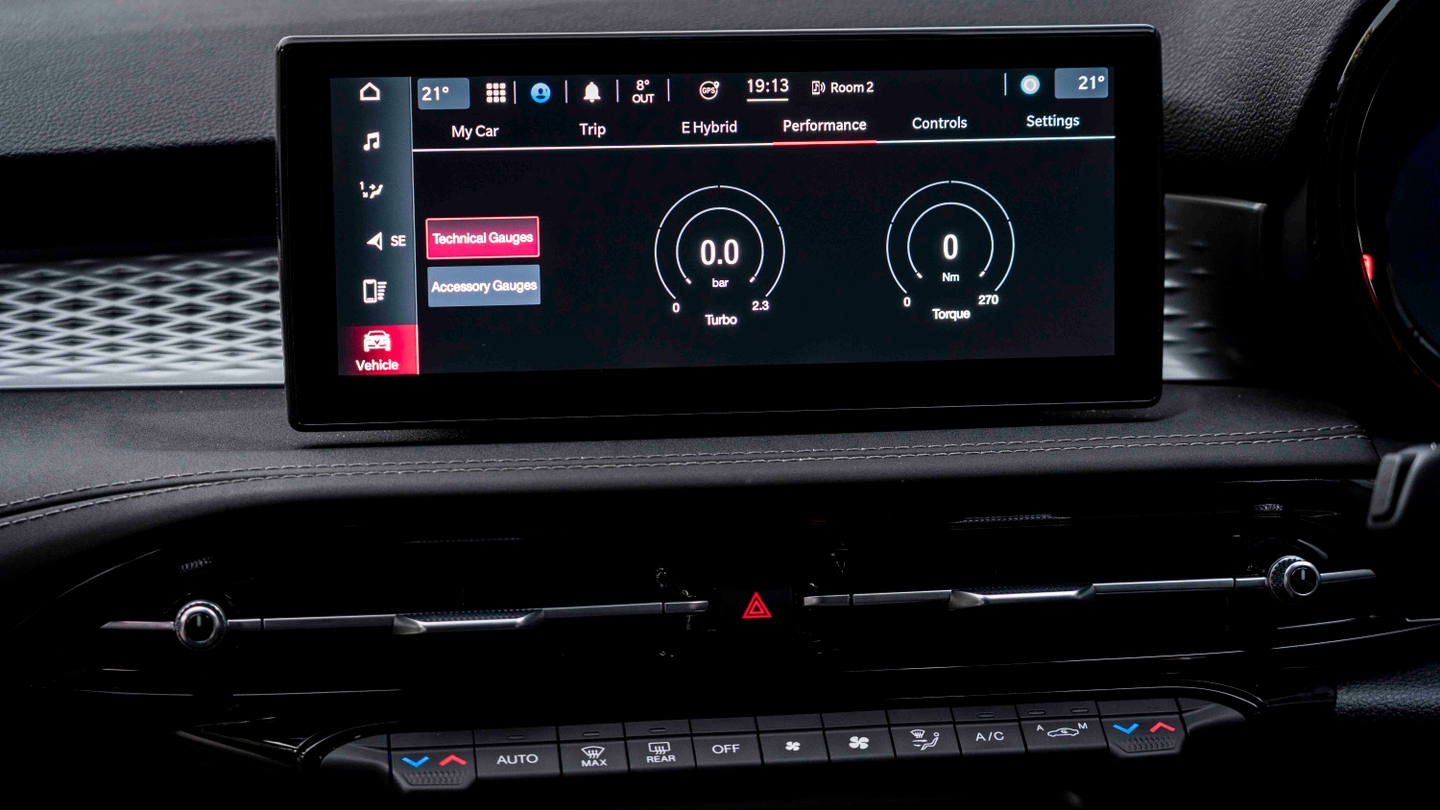
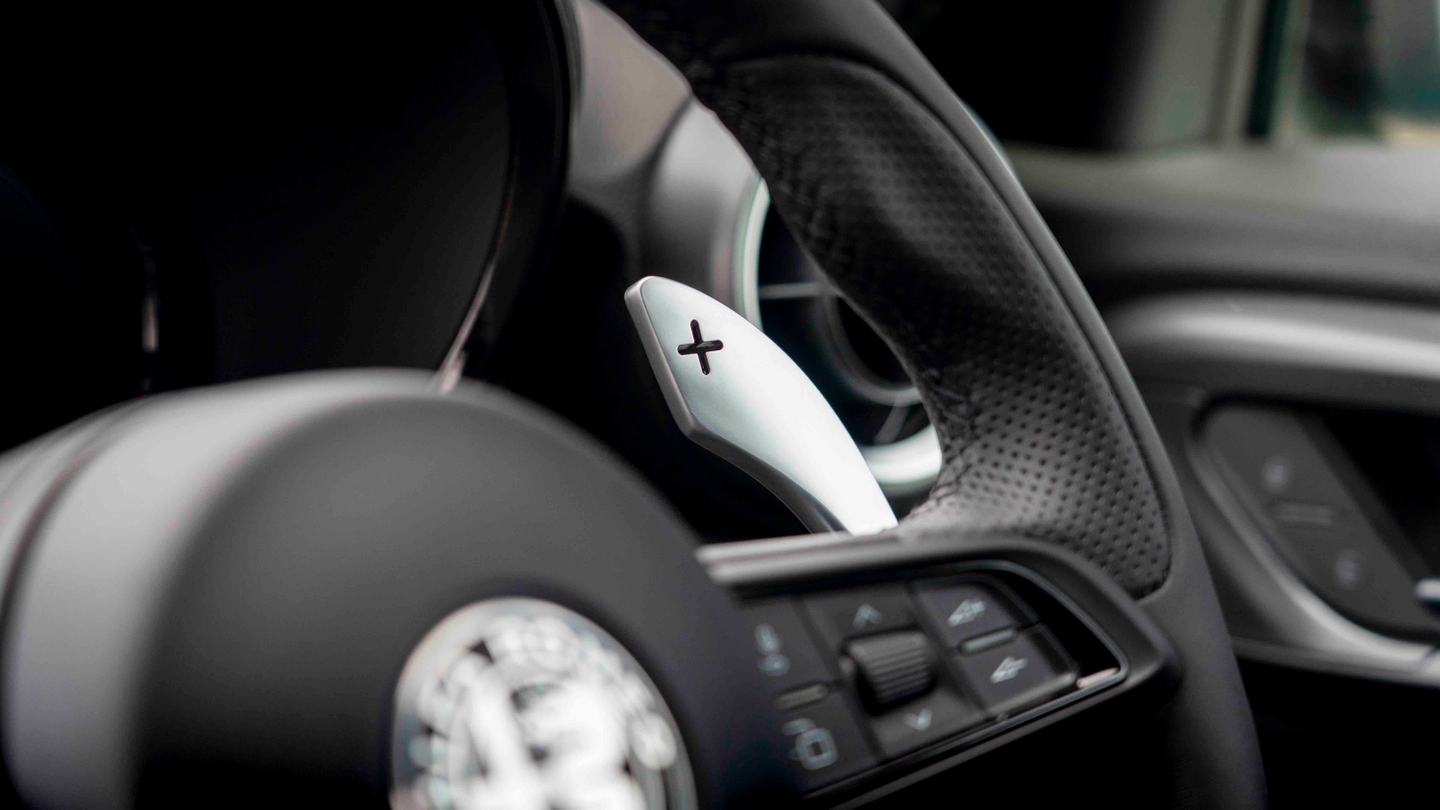
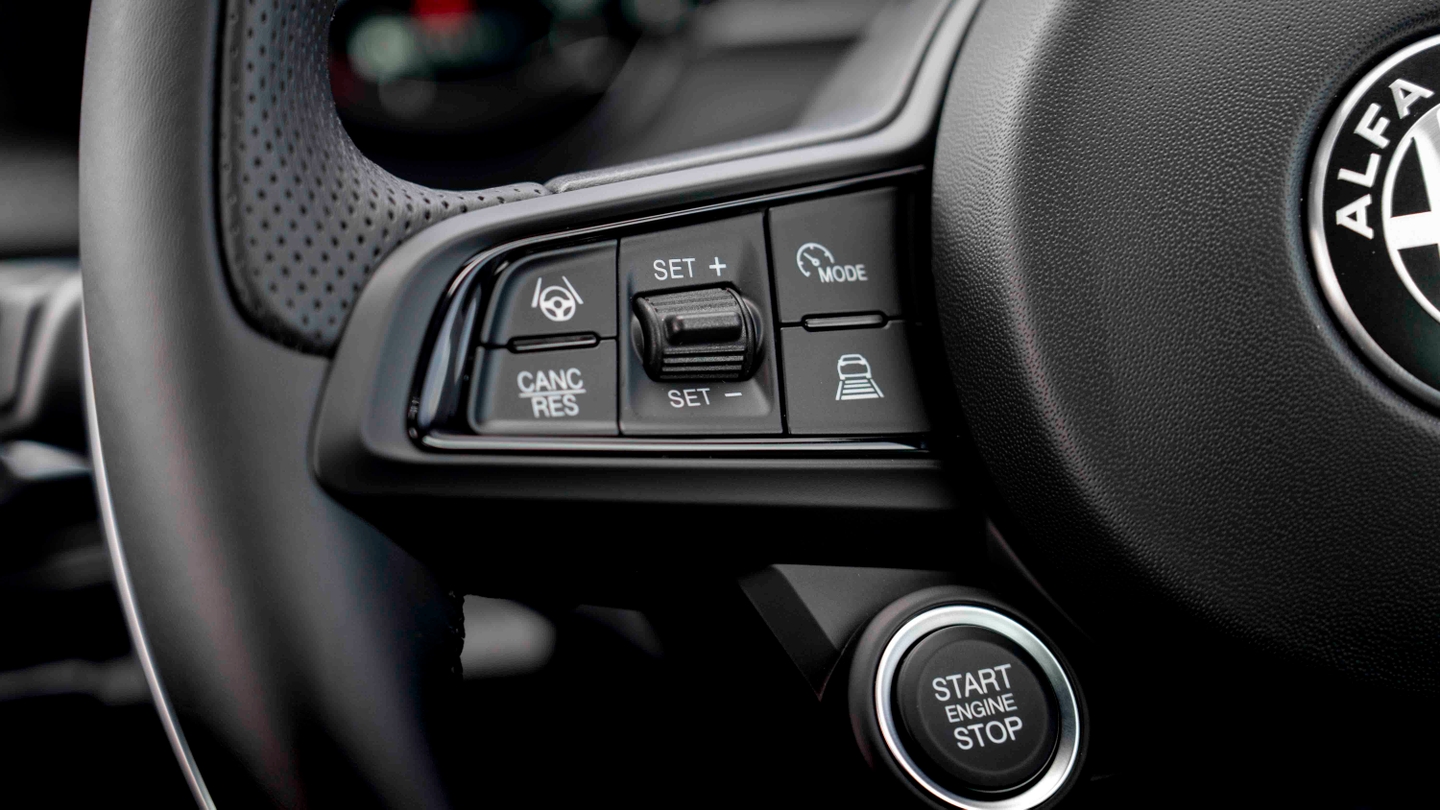
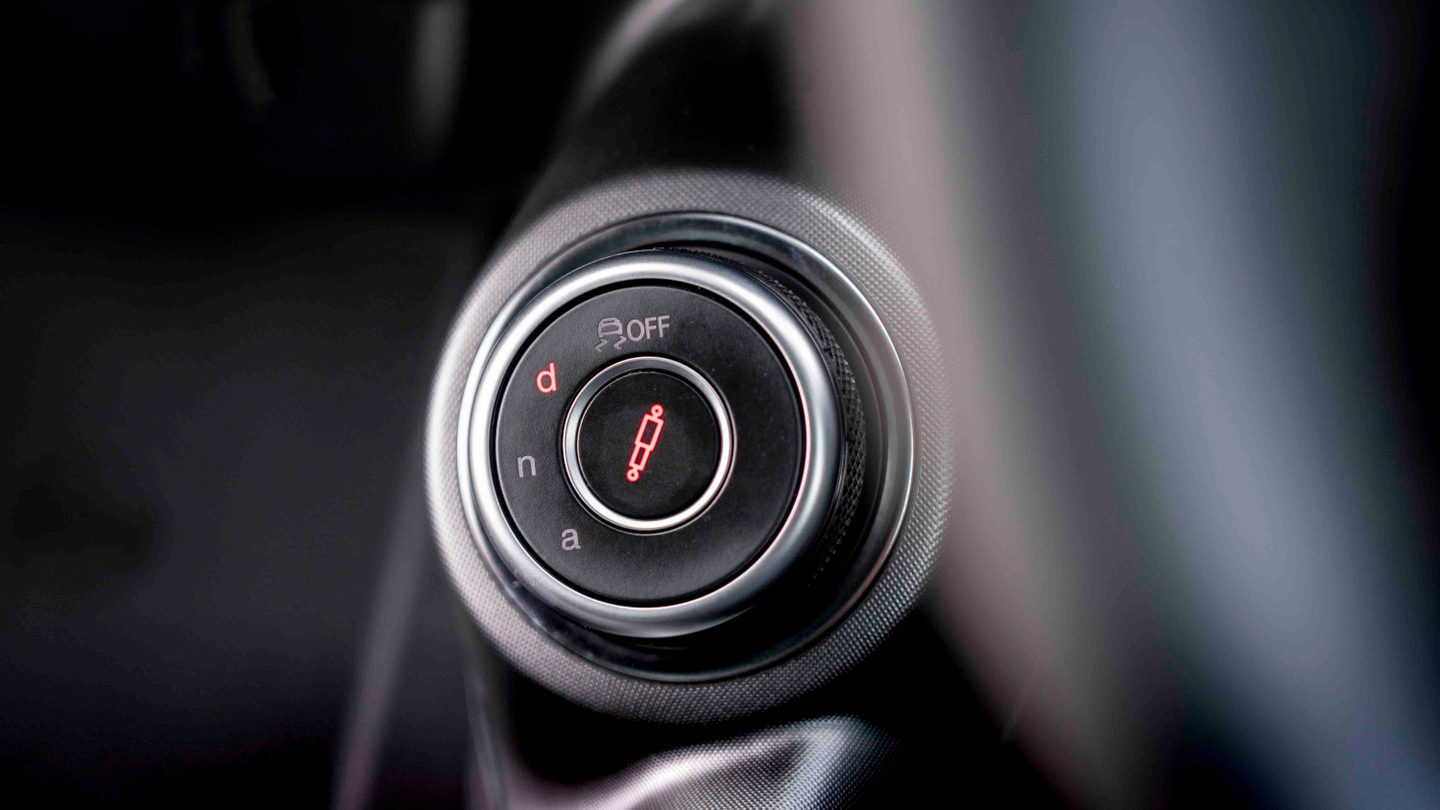
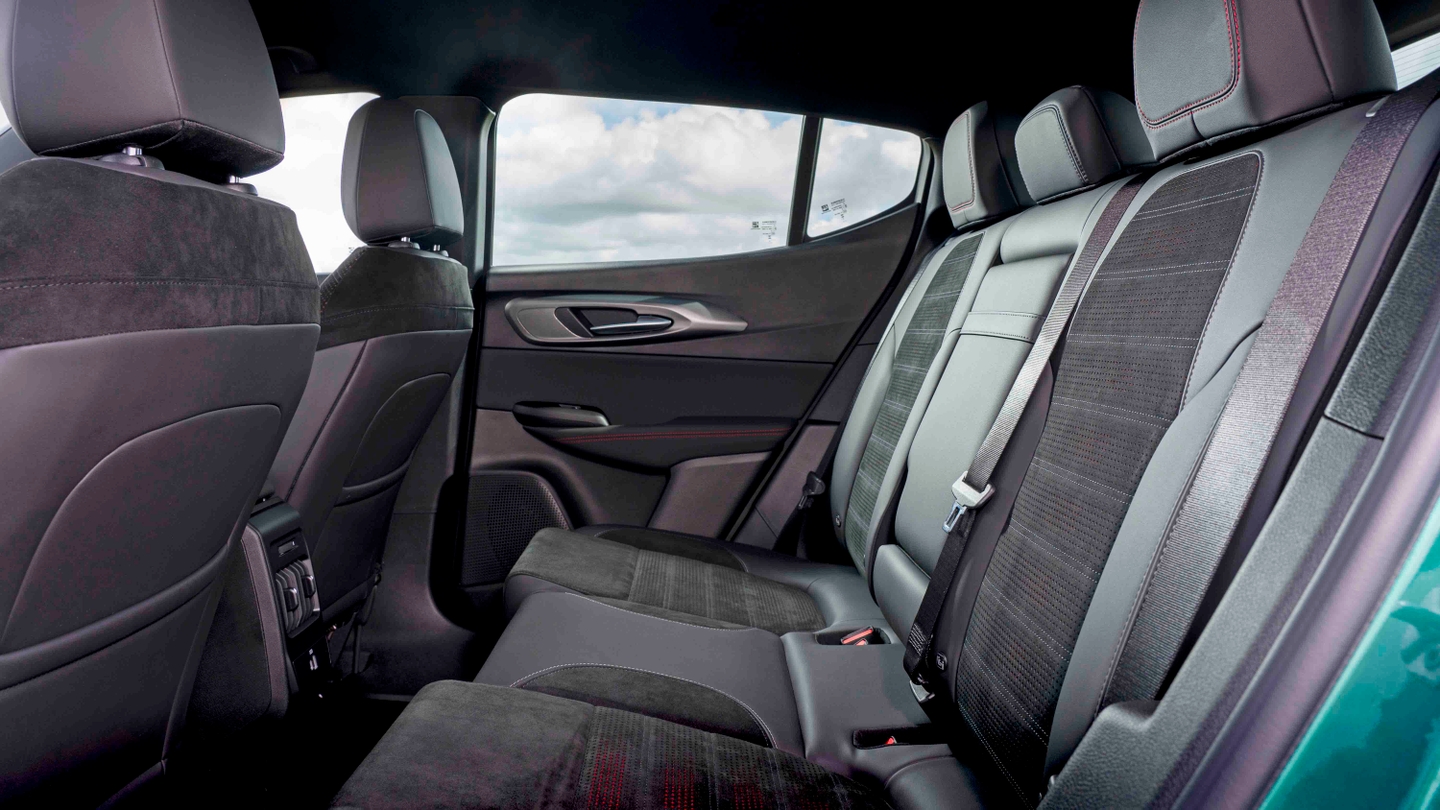
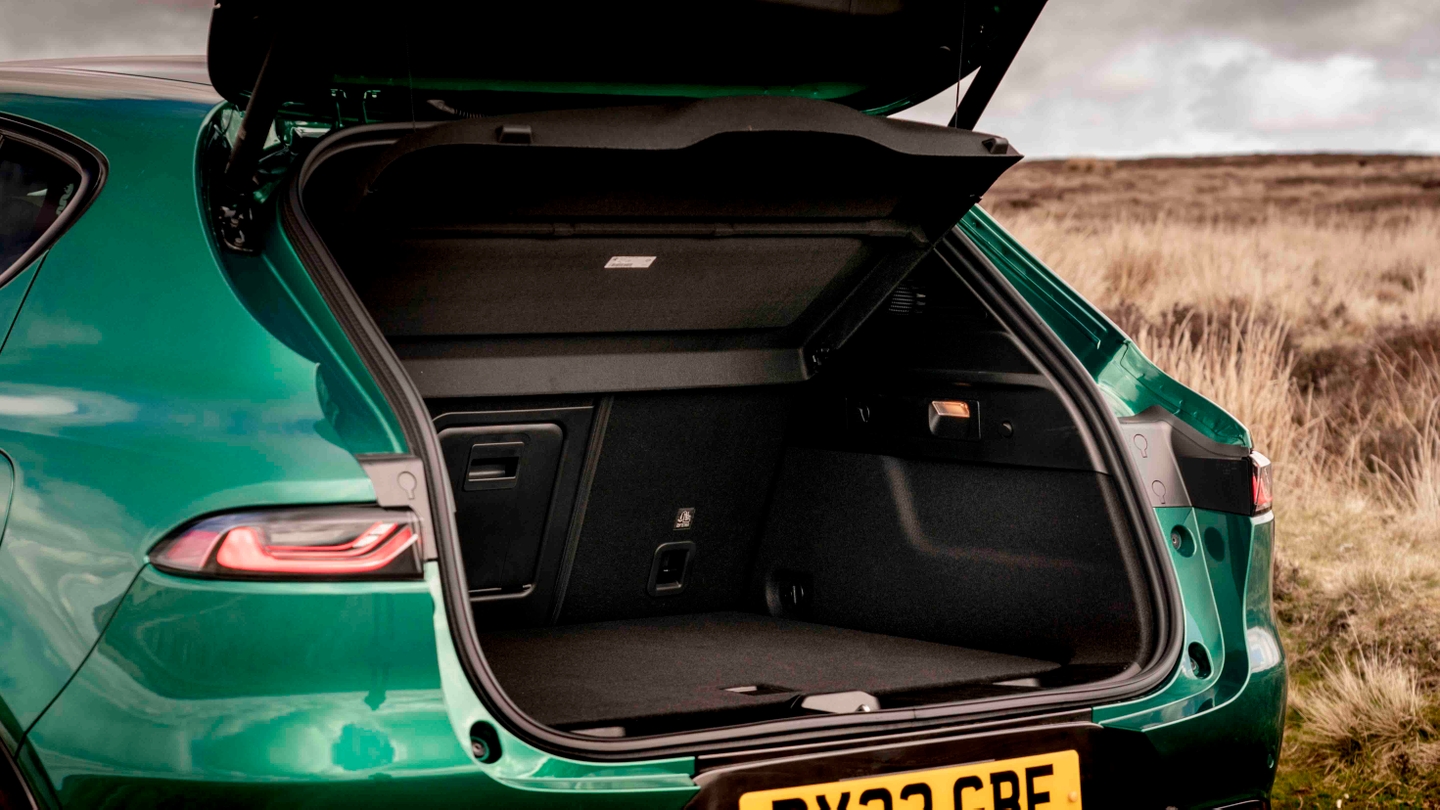
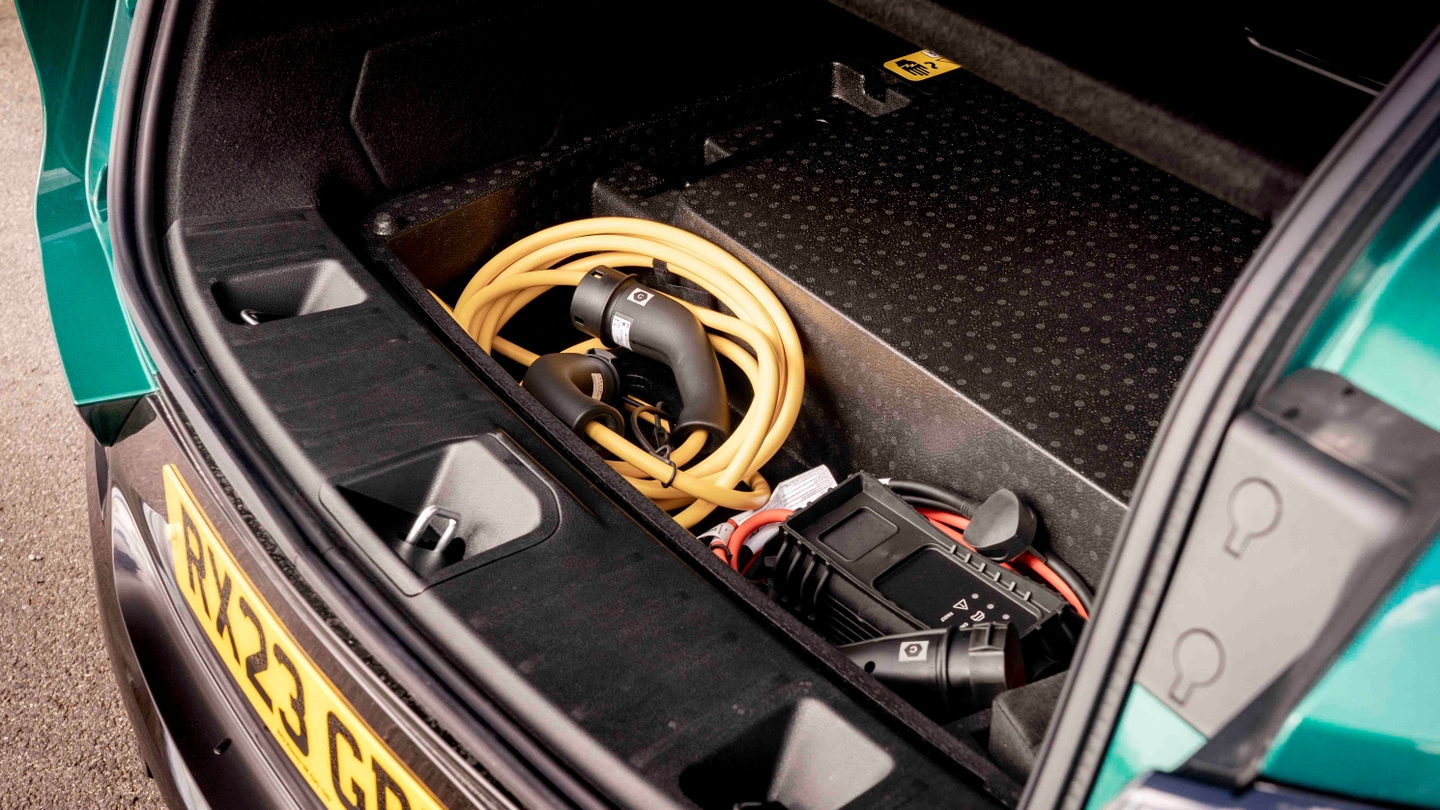
Alfa Romeo Tonale Review
The Alfa Romeo Tonale is good to drive, comfortable and stylish, making it an interesting alternative to the usual German SUVs.
But it wouldn’t be an Alfa Romeo without a few compromises. Rivals are more practical, some of the materials are cheap and the ergonomics need honing. Read on to see if it’s worth test-driving one.
- Just look at it
- Responsive steering
- Easy to use interior
- Rivals are more practical
- Some cheap interior materials
- PHEV has small fuel tank
Should I buy an Alfa Romeo Tonale?
It's always good to try things outside of your comfort zone. And if your comfort zone is premium SUVs, such as the BMW X1, Range Rover Evoque, Mercedes GLA or Audi Q3, then it’ll do you good to try the Alfa Romeo Tonale.
Now, we’re not medical professionals, but down a twisty road the Tonale might well put a smile on your face. Smiling is probably good for your health. And, of course, there’s the raised heartrate you’ll experience every time you look at it and take in its beauty. It might have the same health benefits as jogging to the end of your street.
"The great news is that the Tonale drives nearly as nicely as it looks"
With its shield-shaped grille, curvy lines and moody, piercing headlights, the Tonale leaves more of a lasting impression than the Q3 et al. What’s more, you can feel smug knowing you’ve got something a bit different to everyone else, and that you haven’t just picked one of the obvious choices.

But the Tonale shouldn’t be viewed as a brave choice. Alfa Romeo’s reputation for poor reliability is over-exaggerated these days and, with proper maintenance and routine servicing, the Tonale can be just as dependable as its rivals – most of which aren’t known for bulletproof reliability anyway. Plug-in hybrid Tonales also get an eight-year/100,000-mile battery warranty.
While the Tonale’s rivals are arguably better all-rounders, most of them drive with the same sort of enthusiasm as a toddler being served cabbage soup. In comparison, Alfa’s effort has responsive, quick steering, and top-spec models have adaptive suspension that noticeably firms up for sporty driving or softens off for more relaxed cruising.
Interior and technology

Jump aboard the Tonale and you’re greeted with an interior that manages to feel modern while retaining the tactility of physical switchgear. There’s a row of almost piano key-like buttons for the climate control, and buttons and dials on the thin-spoked steering wheel. The crisp digital instrument cluster does a good job of pretending to be a set of stylish analogue dials, while providing much more information and displays than dials ever could.
The materials make a good first impression. The steering wheel feels great, the air vent controls feel premium and top-spec Veloce models get a pair of fantastic aluminium paddles for taking manual control of the gearbox. Our test car’s suede-effect and leather upholstery was a highlight, too. Sprint cars, meanwhile, get upholstery partly made from recycled scuba diving suits. But it doesn’t take long to find cheaper materials and the flimsy centre console isn’t ideal considering that the Tonale tops out at nearly £50,000. Thankfully, you can pick up a used Tonale from Motorpoint for less than half of that at the time of writing.

Alfa Romeo’s widescreen infotainment system is easy to get your head around, and it won’t take long to find the right function in the limited number of submenus. There aren’t any superfluous ‘expressive’ modes like you get in the BMW X1, and the layout is much cleaner than the Mercedes GLA’s info barrage. It’s quick to react to your inputs and the graphics are good, as well, and there’s an Amazon Alexa voice assistant on board. One quirk of the system is that Alfa hasn’t moved the shortcut keys to the right-hand side of the screen, where they’d be more useful in right-hand-drive cars.
There are two main Tonale trim levels, along with a special edition or two. Sprint (formerly Ti) kicks off proceedings with 18-inch diamond-cut alloy wheels, matrix LED headlights, auto high-beam assist, two-zone climate control, adaptive cruise control and a reversing camera. Step up to Veloce and you get red Brembo brake calipers, 19-inch wheels, privacy glass and ambient lighting; cars built after November 2023 also get heated leather seats and a heated steering wheel.
Practicality

For all its style, the Tonale isn’t afraid of being put to work. Plug-in hybrid cars get a 385-litre boot, which exactly matches the equivalent Mercedes GLA 250e, with a little storage area under the floor that’s perfect for the charging cable. Cars that don’t need plugging in have a much bigger space under there, bringing the total boot space to a competitive 500 litres. You probably won’t need to use the underfloor storage all the time, but it’ll be useful for stashing away valuables or lesser used items.
The main boot space is long and wide, if a little shallow, and there’s almost no load lip – which should make it a lot easier to get heavy items out of the boot, and therefore easier on your back. There are a couple of hooks and a 12V socket back there, which will be useful.

Rear-seat space is good enough provided you’re not a professional basketball player. Legroom is decent – there’s just enough space for two tall adults to sit behind one another, and it’ll be easy enough to fit three adults across the rear bench for short journeys. Headroom is okay for average-sized adults or children; tall adults will find themselves squashed against the headliner. Seat pockets and USB sockets are provided for a bit of back-seat comfort.
The doors open nice and wide, so you won’t have any difficulties putting child seats in – whether the kids are as easy to put in is another matter!
Up front, storage space is fine if not amazing, with a decent-sized glovebox, small-ish door bins and a compact central storage bin under the armrest. There’s a phone tray beneath the air con controls, with wireless phone charging as standard.
Engines and performance

Choosing the right Tonale engine for you is simple: can you plug the car in or not? If not, choose the 1.5-litre mild-hybrid petrol, while the plug-in hybrid provides efficiency and performance benefits if you have easy access to an electricity supply.
The regular petrol engine produces 160hp, putting it firmly in line with the Mercedes GLA 200 and Audi Q3 35 TFSI petrols. Performance is strong enough, with 0-62mph taking a nippy 8.8 seconds, while mixed driving should return around 45mpg. A seven-speed dual-clutch automatic gearbox is standard; there’s no manual option.

Officially, the plug-in hybrid returns 201mpg although, like every plug-in hybrid, that relies on you driving predominantly on battery power. You’ll need to switch the ‘DNA’ dial to the ‘A’ (advanced efficiency) to run on electric power as often as possible, while there’s also an e-save mode for keeping the EV power until later on in your journey. When it is running on battery power, you’ve got up to 37 miles of silent, no-fuel driving available.
The PHEV is considerably more powerful, with 280hp on tap. That translates to a quicker 0-62mph time of 6.2 seconds, which is faster than a number of hot hatchbacks. You’ll need to press through the artificial accelerator pedal limiter to access the full performance, where you’ll find that you don’t really have enough foot room because the lower interior trim cuts into space. Characterful quirks, hey?

There’s a little bit of a delay between pressing the accelerator pedal and movement occurring, and the transition between power sources can occasionally be a little clunky. We’ve said similar things about rival plug-in hybrid cars. At least in the Tonale you can take manual control of the gearbox using the gorgeous aluminium paddles fitted to top-spec Veloce cars. You won’t mind reaching around them to get to the indicators.
What you might get a bit annoyed with is how often you have to stop at a petrol station. The PHEV has a pipette for a fuel tank – even with the electric range included you might not get 300 miles of driving before having to fill up or recharge again.
In a perfect world, we’d like to see a Tonale Quadrifoglio range-topper with excessive performance – which would rival the BMW X1 M35i, Mercedes-AMG GLA 45 S and Audi RS Q3. But with ever-tightening emissions controls, this seems very unlikely.
Driving and comfort

The great news is that the Tonale drives nearly as nicely as it looks. A big part of the talent comes from the adaptive dampers on Veloce cars, which lets you have the sportiest driving mode with soft or firm suspension. This means you can improve the Tonale’s ride quality on the fly; on some roads you’ll find the softer suspension better and, on others, the firmer setting might be preferable if you feel you’re wobbling around a little on the softer setup.
Alfa has gifted super-fast steering to the Tonale. This takes a second to get used to – it might feel ‘tippy’ at first – but the upshot is that the Tonale is really keen to turn in, making it feel alert and responsive in corners. Down a country road, the Tonale is more fun than an Audi Q3 or Mercedes GLA, but it manages to be comfortable too. It’s very impressive.

At speed, you’ll notice some tyre noise and a tiny bit of wind noise, but there’s barely any sound from the suspension and all of the ambient noise can be drowned out by your favourite Pavarotti track. Long journeys should prove relaxing.
As is common with plug-in hybrids, the Tonale PHEV’s advanced efficiency driving mode dulls the accelerator response to improve efficiency and save battery power. We’d like a little more control over the brake regeneration settings to maximise efficiency, mind.




